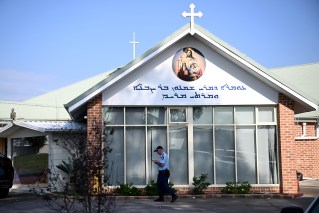Another 155,000 Australians will be plunged into poverty when the JobSeeker payment changes on Thursday, with a leading economist calling it an “opportunity lost” to fundamentally alter the course of how the government treats those on low incomes.
“This one policy measure shows that whether to leave Australians to live in poverty is a government choice,” said Matt Grudnoff, senior economist at The Australia Institute.
Modelling from the progressive think tank, detailed in a new paper from Mr Grudnoff, shows the April 1 changes to the JobSeeker unemployment allowance will put 155,000 people below the poverty line.
That includes 20,000 children.
The federal Parliament backed changes last week to increase the base rate of JobSeeker by $50 a fortnight from April 1.
But because the increase kicks in after the fortnightly Coronavirus Supplement of $150 ended on March 31, it means a person on JobSeeker next month will effectively receive $100 less every fortnight than they previously did.
That change, Mr Grudnoff said, will push thousands into a crushing financial situation.

The Australia Institute modelling on JobSeeker and poverty. Photo: TAI
“The government has a choice. It can sentence more than a million Australians to living in poverty, including hundreds of thousands of children,” he said.
“Or it can make the same choice they made last year and show that Australia is a compassionate country and spare these people that fate.”
The new JobSeeker rate for a single person with no children is $310 per week, or just $44 a day.
The Henderson poverty line, a standard measure accepted by many economists, is $561 per week.
The coronavirus supplement, originally pegged at $550 per fortnight at the beginning of the pandemic, was gradually pared back to $250 then $150.
Each step along the way, The Australia Institute joined a large group of unlikely allies – from the Labor and Greens parties, to charities, social organisations, economists, retailers groups and business lobbies – to call for the JobSeeker rate to be permanently raised.
Mr Grudnoff said the initial $550-a-week supplement “lifted more Australians out of poverty than any other single government policy measure”, with half a million people raised above the poverty line.
However, each gradual cut pushed more and more people back down.
Mr Grudnoff said Australia Institute modelling found that, in April 2021, there were a million more people living in poverty compared to March 2020.
“This represents a lost opportunity to make significant improvements to the rates of poverty in Australia, including the number of children in poverty,” he said.
The Coalition government, backed by the Labor Party, enacted the first real rise in the JobSeeker rate in decades.
But the increase – equating to just $3.57 per day – was slammed as not nearly enough.

JobSeeker changes come into effect on April 1. Photo: AAP
Speaking at a rally on the front lawn of Parliament House two weeks ago, Labor senator Louise Pratt called the changes “disgusting” and said she could not live on $43 per day, the new effective rate of JobSeeker.
“We will see many more Australians subjected to these indescribable levels of poverty,” Senator Pratt said.
Dante, a university student who recently moved to Canberra from Wollongong, told The New Daily the reforms would leave her hungry.
“I already barely have enough. I’m living off $60 a fortnight for food. That’s not including medication,” she said.
Canberra resident River Pettigrew said she would “not be able to feed myself three meals a day” or pay for medication when the rate changed.
Mr Grudnoff again called on the government to revisit the JobSeeker rate, and increase it to above the poverty line.
“The government has proved that it is possible to significantly reduce poverty in Australia,” he wrote in his paper.
“If the government increased JobSeeker by $550 a fortnight – the original coronavirus supplement rate – poverty rates would fall rather than increase.
“Rather than putting an additional 155,000 people in poverty at the end of March 2021, the number of people in poverty would fall by half a million – including 90,000 children.”









